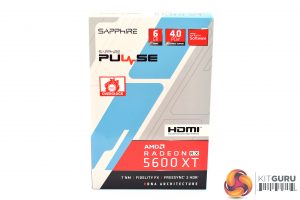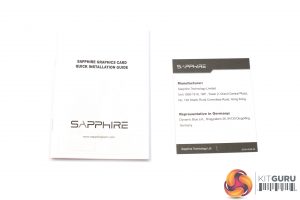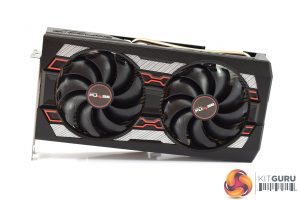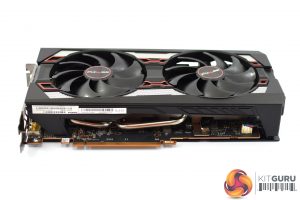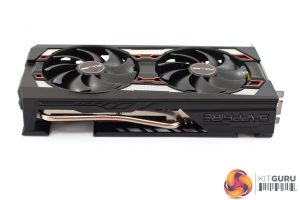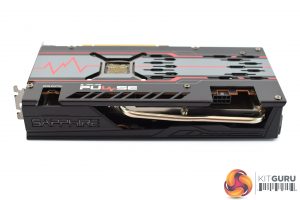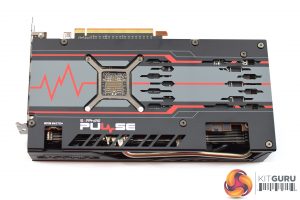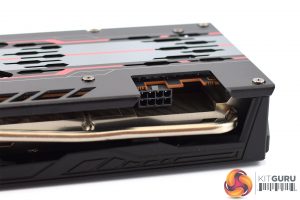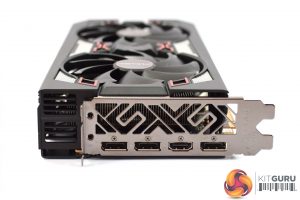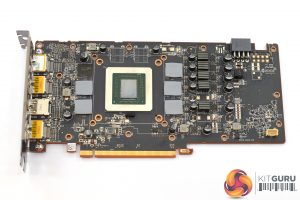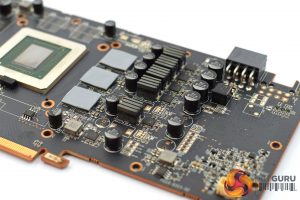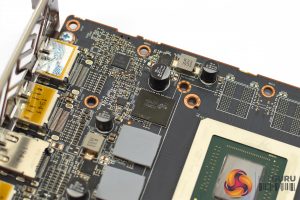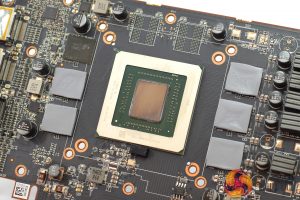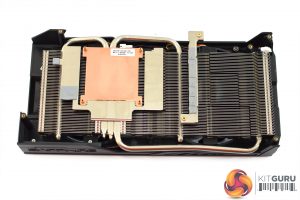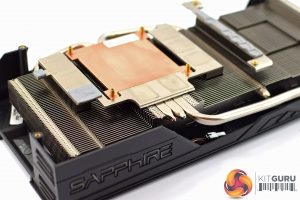Taking a look at the card in question, the Sapphire RX 5600 XT Pulse ships in a multi-colour box, with the Pulse and Radeon branding visible on the front.
Inside, there are just two pieces of documentation – a quick start guide and a manufacturer's note.
The card itself is… well, it's a Pulse RX 5700. Yep, Sapphire is re-using the same Pulse RX 5700 cooler and shroud for the RX 5600 XT, which does make sense – they are, after all, both using the same GPU configuration. The only disappointment there is that it marks a return to the silver and red accents. I remarked in my review of the Pulse 5500 XT that the all-black design is much smarter, but by using the 5700 shroud, this feels like a backward step.
As for the two fans, these are dual ball bearing designs, each measuring 95mm. Sapphire says these ‘have an approximately 85% longer lifespan than sleeve bearings in our tests' while ‘the improvements to the fan blades means the solution is up to 10% quieter than the previous generation.'
Overall dimensions of the card are, of course, the same as the RX 5700 Pulse model: it measures 254(L)x 135(W)x 46.5 (H)mm. The length and 2.5-slot thickness aren't really anything out of the ordinary, but this is quite a tall card – extending well beyond the height of the PCIe bracket. As always, it's worth double checking this will fit in your case – if the chassis is particularly narrow, the Pulse may cause an issue there.
On the front side of the card, we get a look at the small Sapphire logo, and just above this is a dual-BIOS switch where users can engage the ‘performance' or ‘silent' BIOS depending on your preference. Both were updated when I received the new BIOS ahead of launch, here is a breakdown of each one:
Performance BIOS: TGP: 160W, memory 14Gbps, Boost Clock 1750 MHz, Game Clock 1615 MHz.
Silent BIOS: TGP: 135W, memory 12Gbps, Boost Clock 1620 MHz, Game Clock 1460 MHz.
As for the backplate, this is a full-length design with a cut-out behind the GPU core and some additional cut-outs to the side. It is made of aluminium and carries on with the red and grey accents.
Power requirements for the 5600 XT consist of a single 8-pin connector. We can also see the standard display output allocation, with 3x DisplayPort and 1x HDMI.
Opening up the card reveals a look at the PCB. This has some slight differences to the PCB of the RX 5700, but to my eye it is the same overall design, which again makes sense. Primarily, this Pulse uses a 5+1 VRM design, when most 5700-series cards have a 6 or 7-phase VRM for the GPU.
Arguably more interesting is the choice of memory – it's 6GB GDDR6 as we know, but the modules are produced by Micron, and are labelled ‘9UA77D9WCW'. That model code decodes to ‘MT61K256M32JE-14‘, which for me is very interesting as that is 14Gbps memory as rated by Micron themselves. The reason I find that interesting is because these modules would have been used for 5600 XT PCBs well before the BIOS was updated, yet the spec was only ever going to be 12Gbps. Instead of using actual 12Gbps modules, it seems AMD was ‘nerfing' 14Gbps modules by speccing them to run at 12Gbps instead.
Of course, now the BIOS update has got these back running at 14Gbps things are as they should be, but I still find it somewhat intriguing that AMD was going to run these modules slower than they were rated for by Micron, prior to the BIOS update situation.
Lastly, as for the heatsink, this is again the same as the Pulse 5700. It is comprised of a single fin stack and uses three 6mm heatpipes. These draw heat from the copper coldplate for the GPU, while there is a separate plate around that for the memory modules. One much smaller plate is also positioned off to the side for the VRM.
Be sure to check out our sponsors store EKWB here
 KitGuru KitGuru.net – Tech News | Hardware News | Hardware Reviews | IOS | Mobile | Gaming | Graphics Cards
KitGuru KitGuru.net – Tech News | Hardware News | Hardware Reviews | IOS | Mobile | Gaming | Graphics Cards


